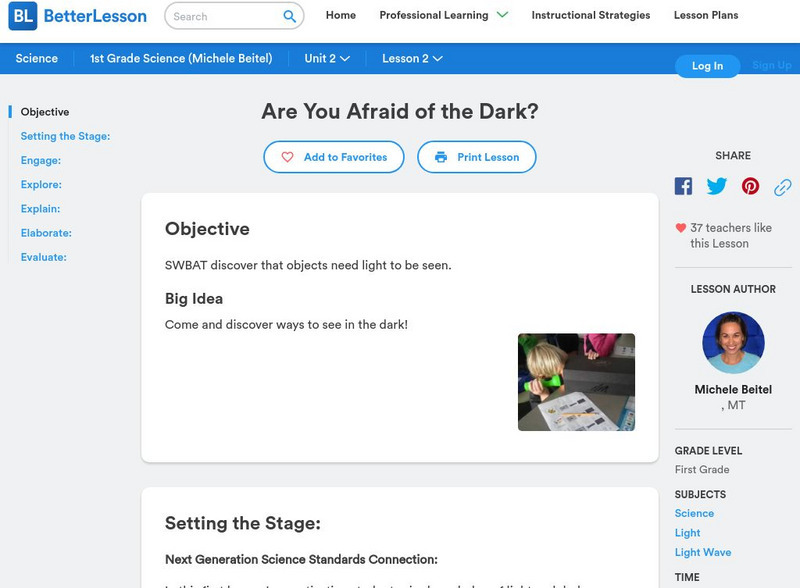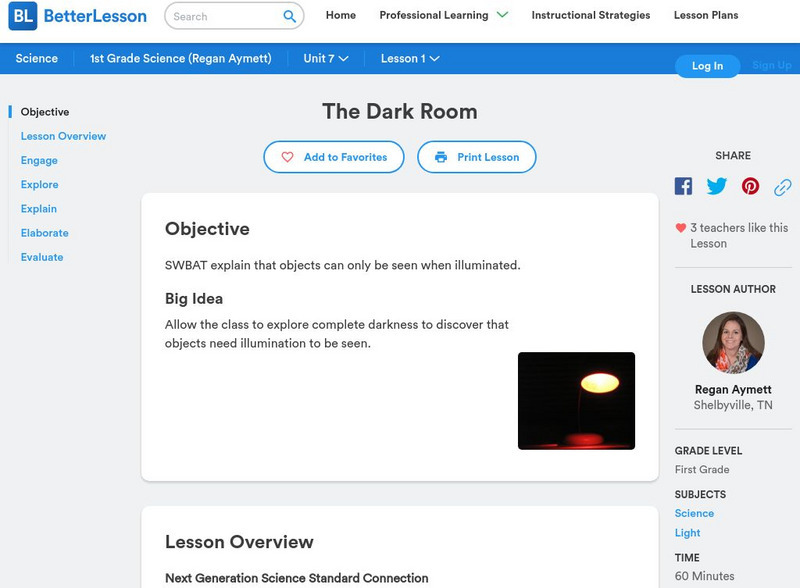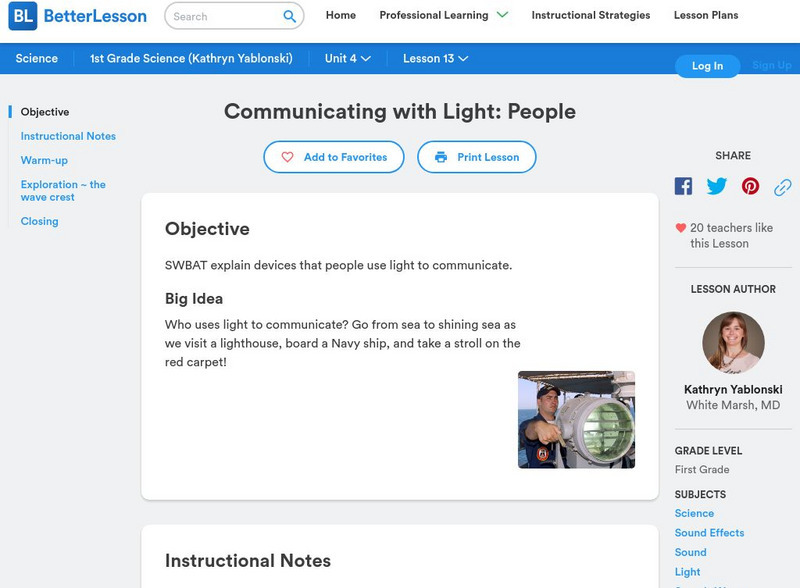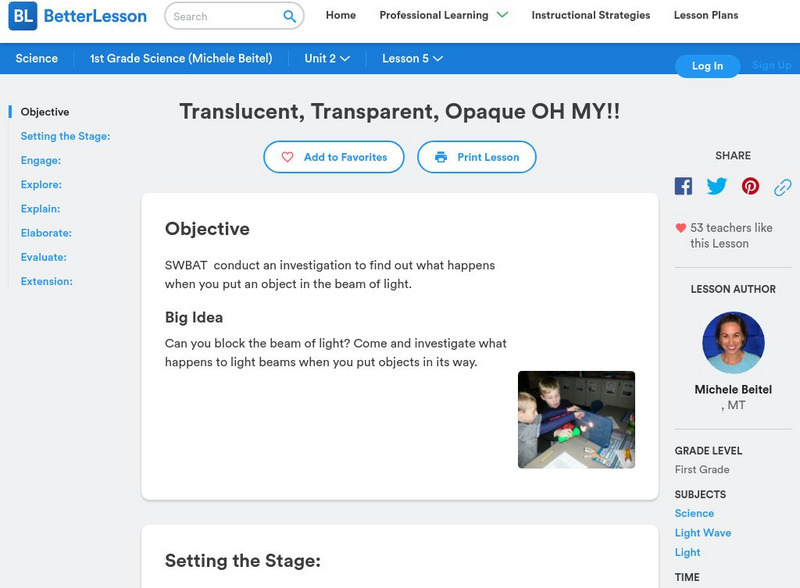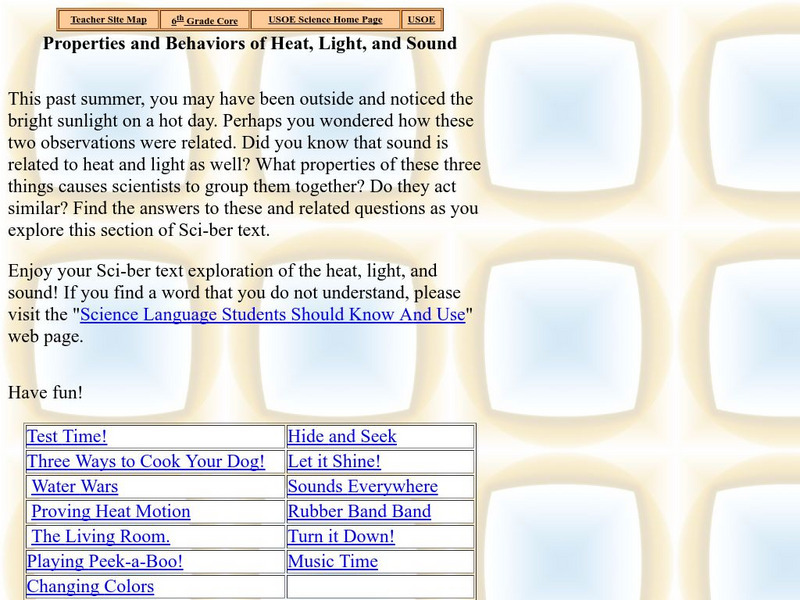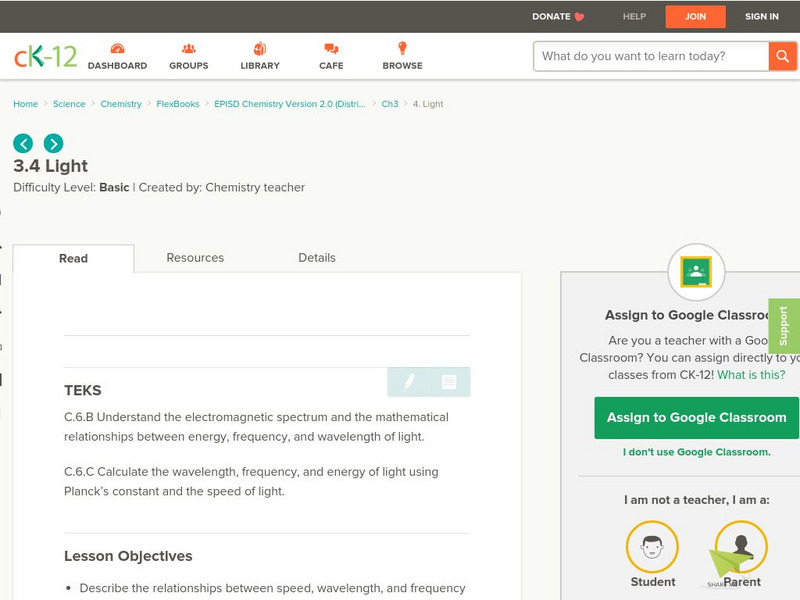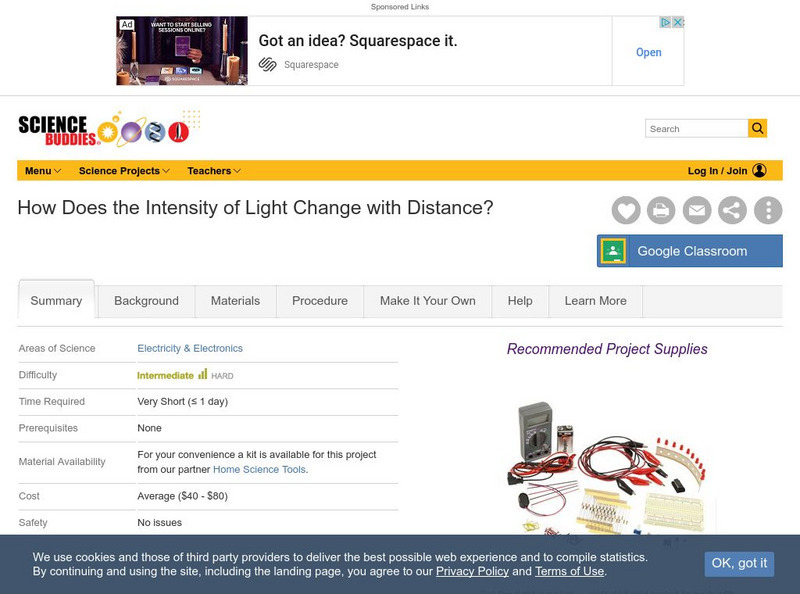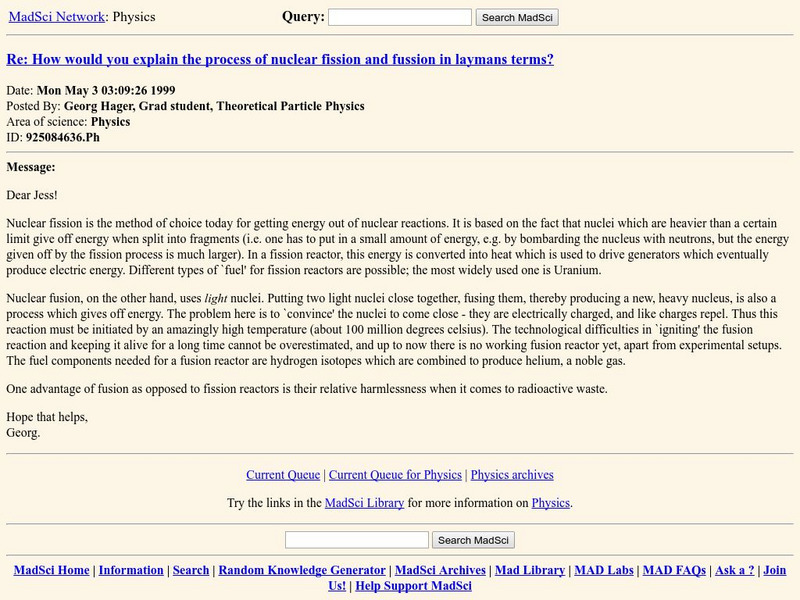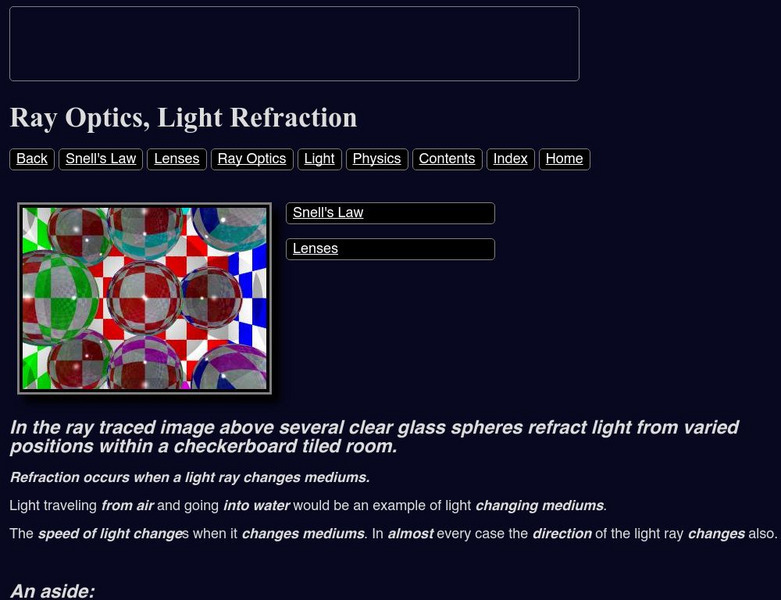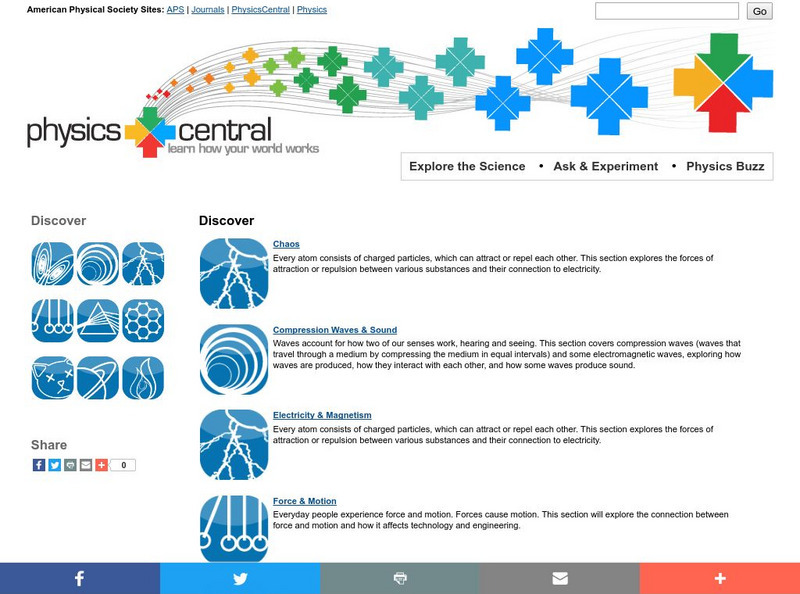PBS
Pbs Learning Media: Shadow Shape Game
Play with PEEP to explore how shadows change when the position of light changes. Detailed teaching tips are included as well as additional shadow activities for the students.
Better Lesson
Better Lesson: Are You Afraid of the Dark?
Come and discover ways to see in the dark! Students will conduct an investigation on light and dark. The investigation will allow students to gather evidence on how items illuminate. Using cause and effect, the students will demonstrate...
Better Lesson
Better Lesson: The Dark Room
This lesson allows the class to explore complete darkness to discover that objects need illumination to be seen. Students will make predictions, plan an investigation, and carry out their experiment in the classroom.
Better Lesson
Better Lesson: Communicating With Light: People
Who uses light to communicate? Go from sea to shining sea as we visit a lighthouse, board a Navy ship, and take a stroll on the red carpet! Students will investigate different ways of communicating with light and at the end of the lesson...
Better Lesson
Better Lesson: Translucent, Transparent, Opaque Oh My!!
Can you block the beam of light? Students will investigate what happens to light beams when you put objects in its way. These tests will allow them to learn new vocabulary (translucent, transparent, opaque) and discover how these terms...
NASA
Nasa: Optics: Light, Color, and Their Uses
Download this Educators Guide to light, color, and their uses. Choose from different activities using lenses, prisms, hidden messages, periscopes, and kaleidoscopes
CK-12 Foundation
Ck 12: Diffraction
[Free Registration/Login may be required to access all resource tools.] Students investigate diffraction of light and the interference patterns that are produced through constructive and destructive interference of the waves. Students...
Utah Education Network
Uen: Trb 3:5 Investigation 6 Heat From Machines
Learn how heat energy can be produced by mechanical and electrical machines.
Utah Education Network
Uen: Sun or Shade?
Use a thermometer to measure the air temperature in several places around the school.
Utah State Office of Education
Utah Science: Properties and Behaviors of Heat, Light and Sound
How can scientists lump heat, light and sound together when investigating properties and behaviors? This learning module will address that question through a series of activities.
CK-12 Foundation
Ck 12: Wave Speed Calculations
[Free Registration/Login may be required to access all resource tools.] Students investigate and analyze characteristics of waves, including velocity, and calculate the relationship between wave speed, frequency, and wavelength.
CK-12 Foundation
Ck 12: Index of Refraction
[Free Registration/Login may be required to access all resource tools.] In this module, discover and solve problems involving the index of refraction, and investigate problems involving Snell's Law.
CK-12 Foundation
Ck 12: Light
[Free Registration/Login may be required to access all resource tools.] In the following tutorial students will describe the relationships between speed, wavelength, and frequency of light. They will understand the photoelectric effect...
Science Buddies
Science Buddies: How Does the Intensity of Light Change With Distance?
How far would you have to travel so that the light of the full sun would provide "daylight" no brighter than twilight on Earth? This project describes a method to verify the inverse square law: how light, sound, electrical signals, and...
Optical Society
Optical Society of America: Exploring the Science of Light: What Is Optics?
A collection of tutorials and interactive resources, from basic to advanced, that explain concepts related to the science of light.
Utah Education Network
Uen: Trb 3:5 Investigation 2 Green Apples
Classroom activities help students understand the effect of light on the growth of seeds and plants.
American Museum of Natural History
American Museum of Natural History: See the Light
Take a look at light with these three easy experiments
Discovery Education
Discovery Education: 3 M Young Scientist Lab: Triboluminescence
Detectable flashes of light are released as wintergreen-flavored candies are crushed in darkness.
University of Florida
Florida Museum of Natural History: Physical Science
This guide focuses on four physical science topics that fascinate children and scientists alike. They are motion, magnets, sound, and light. With your guidance and support, these topics provide children with many opportunities to explore...
Open Ed
Open Ed Sci: 6.1 Light & Matter
How does a one-way mirror work? Though most everyone knows that one-way mirrors exist, having students model how they work turns out to be a very effective way to develop their thinking about how visible light travels and how we see...
MadSci Network
Msn: How Would You Explain the Process?
From the Mad Scientist Network web site. Using a question and answer format, this page explains the differences between nuclear fusion and nuclear fission. The details of each process are sketched in simple language.
Curated OER
Ray Optics, Light Refraction
Site studies light refraction and provides illustrations several illustration. Contains links to Snell's Law, lenses, ray optics, light and much more.
Physics Central
American Physical Society: Physics Central: Discover Homepage
Link to nine major physics topics and dig deeper into the content. Find out about the work of scientists in each field and see example physical science experiments.
Georgia State University
Georgia State University: Hyper Physics: Color
This site from Georgia State University discusses the location of visible light on the electromagnetic spectrum. Includes the wavelength values for various colors of light within the visible light spectrum.



